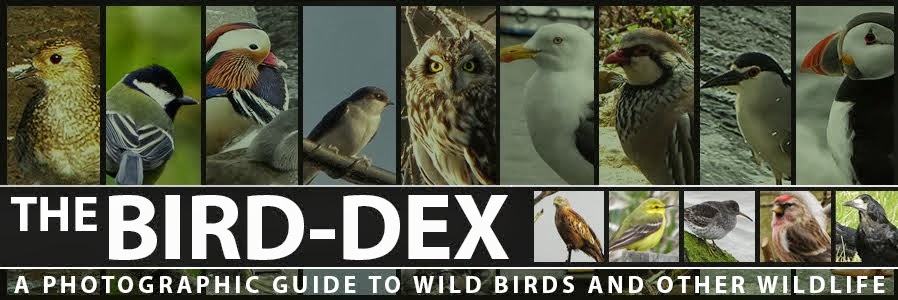OTHER NAMES: N/A
Latin Etymology: Anser ("goose") serrirostris ("saw billed")
Tundra Bean Goose (subspecies A. s. rossicus) with two Greylag Geese at Warnham LNR, West Sussex - February 2015
Featured Subspecies: Anser serrirostris rossicus
Weight: 1.7-4kg / Length: 68-90cm / Wingspan: 140-174cm
Species like the Tundra Bean Goose are examples of where a project like this gets a little complicated. Classically, there was only considered to be one species of Bean Goose (up to the point of including the Pink-Footed Goose too) but subsequent research has found that even one the Pink-foot is removed, the species is easily divisible by two - the birds that nest in bogs in the subarctic Taiga and birds which nest in the Subarctic Tundra. There are also physical differences between the two - for instance, the Tundra has a shorter beak. But some authorities split the two up (such as the American Ornithologists Union) and some keep it as a single species (such as the British Union of Ornithologists) . While I could easily just go with the BOU list, I don't implicitly assume them to be correct over any other list, so I'm going to count it as a separate species.
As to the bird itself, it is a small grey goose, fairly similar to the Pink-foot and Taiga Bean but with a shorter bill. It is also smaller generally than the Taiga Bean. They are found scattered throughout the UK in Winter, often with other grey geese but, unlike the Taiga Bean Goose, do not have any specific regular Wintering sites. This individual was accompanying a flock of Greylag Geese that were grazing on the Golf Course adjacent to Warnham LNR in Horsham.
Related Species:
Order: Anseriformes
Family: Anatidae
Genus: Anser
Subspecies: A. s. rossicus, A. s. serrirostris
- Sighting Locations -
UNITED KINGDOM - Rare and scatter winter visitor - around 320 individuals.
- A single vagrant bird seen with a flock of Greylag Goose at Warnham LNR in February 2015


No comments:
Post a Comment